A Retrospective Analysis of the COVID-19 Infodemic in Saudi Arabia
Abstract
:1. Introduction
- What forms of misinformation spread the most in pandemics?
- How does misinformation evolve over time?
2. Background and Related Work
2.1. Health Misinformation in the Arabic Language
2.2. Arabic COVID-19 Twitter Datasets
2.3. Tools to Understand, Measure, and Control the COVID-19 Infodemic
3. Materials and Methods
3.1. Data Collection
3.1.1. Twitter Data
3.1.2. Survey Data
3.2. Identifying Misinformation Themes and Keywords
3.2.1. Misinformation Themes
3.2.2. Data Segmentation
3.2.3. Misinformation Labeling and Validation
4. Results
4.1. Misinformation in Social Media
4.2. Types of Misinformation Emerging from Digital Social Listening during the COVID-19 Pandemic
4.3. Temporal Patterns in COVID-19 Related Digital Misinformation in Saudi Arabia
4.4. Community-Reported Misinformation-Survey
5. Discussion
6. Conclusions
Author Contributions
Funding
Data Availability Statement
Acknowledgments
Conflicts of Interest
Appendix A
| Hashtags | English Translation |
|---|---|
| الوقاية_من_كورونا | Corona Prevention |
| كلنا_مسؤول | We are all responsible |
| عش_بصحة | Live healthily |
| أسئلة_كورونا | Corona’s Questions |
| أبطال_الصحة | Health Heroes |
| أبطال_المجتمع | Community Heroes |
| المنتجات_متوفرة | Products available |
| الخدمات_مستمرة | Services continuous |
| متر_ونص | One and a half meters |
| شكراً_أبطال_التعليم | Thanks Education heroes |
| إيقاف_صلاة_الجماعة | Stopping congregational prayer |
| إغلاق_الحدائق | nParks closure |
| صلوا_في_رحالكم | Pray in your travel |
| ايقاف_الصلاة_بالمسجد | Stop praying in the mosque |
| ايقاف_صلاة_الجمعة_والجماعة | Stopping Friday and group prayers |
| إغلاق_محلات_الحلاقة | barber shops closure |
| اغلاق_المقاهي | Cafes closure |
| اغلاق_الصالونات | Salons closure |
| ايقاف_الدوري | Stopping football league |
| تعليق_النشاط_الرياضي | Sports suspension |
| تعليق_الرحلات_الدوليه | International flights suspended |
| تعليق_الرحلات_الداخليه | Internal flights suspended |
| تعليق_العمل | Work suspension |
| تعليق_الدراسة | School Suspension |
| اغلاق_النوادي_الرياضية | Gyms closure |
| اغلاق_المولات_في_السعوديه | Closure of the malls in Saudi Arabia |
| إغلاق_المجمعات_التجارية | Closure of Shopping Centres |
| تعليق_القطاع_الخاص | private sector suspension |
| منع_التجول | Curfew |
| منع_التنقل_بين_المناطق | Prevent movement between regions |
References
- Akbar, S.Z.; Panda, A.; Kukreti, D.; Meena, A.; Pal, J. Misinformation as a Window into Prejudice: COVID-19 and the Information Environment in India. Proc. ACM Hum.-Comput. Interact. 2021, 4, 249. [Google Scholar] [CrossRef]
- Gallotti, R.; Valle, F.; Castaldo, N.; Sacco, P.; De Domenico, M. Assessing the risks of ‘infodemics’ in response to COVID-19 epidemics. Nat. Hum. Behav. 2020, 4, 1285–1293. [Google Scholar] [CrossRef]
- Gmi_blogger. Saudi Arabia Social Media Statistics 2020 (Infographics)—GMI Blog. 2020. Available online: https://froggyads.com/blog/saudi-arabia-social-media-statistics-infographics-gmi-blog/ (accessed on 27 September 2021).
- Al-Masoudi, M. Twitter in Saudi Arabia. 2021. Available online: https://twitter.com/saudiarabia (accessed on 27 September 2021).
- Alamro, N.; Almana, L.; Alabduljabbar, A.; AlKahtani, M.; AlDihan, R.; Almansour, A.; Alobaid, N.; AlOthaim, N.; Alshunaifi, A. Saudi Arabia COVID-19 Snapshot MOnitoring (COSMO Saudi): Monitoring Knowledge, Risk Perceptions, Preventive Behaviours, and Public Trust in the Current Coronavirus Outbreak in Saudi Arabia. PsychArchives. 2020. Available online: https://www.psycharchives.org/handle/20.500.12034/2496 (accessed on 27 September 2021).
- Alharbi, A.; Lee, M. Kawarith: An Arabic Twitter Corpus for Crisis Events. In Proceedings of the Sixth Arabic Natural Language Processing Workshop, online, 19–23 April 2021; Association for Computational Linguistics: Kyiv, Ukraine, 2021; pp. 42–52. [Google Scholar]
- Alqurashi, S.; Alhindi, A.; Alanazi, E. Large Arabic Twitter Dataset on COVID-19. arXiv 2020, arXiv:2004.04315. [Google Scholar]
- Alshalan, R.; Al-Khalifa, H.; Alsaeed, D.; Al-Baity, H.; Alshalan, S. Detection of Hate Speech in COVID-19—Related Tweets in the Arab Region: Deep Learning and Topic Modeling Approach. J. Med. Internet Res. 2020, 22, e22609. [Google Scholar] [CrossRef] [PubMed]
- Alsudias, L.; Rayson, P. COVID-19 and Arabic Twitter: How can Arab World Governments and Public Health Organizations Learn from Social Media? In Proceedings of the NLP COVID-19 Workshop, Seattle, WA, USA, 9 July 2020; Association for Computational Linguistics: Kyiv, Ukraine, 2020. [Google Scholar]
- Oyeyemi, S.O.; Gabarron, E.; Wynn, R. Ebola, Twitter, and misinformation: A dangerous combination? BMJ 2014, 349, g6178. [Google Scholar] [CrossRef] [Green Version]
- Chew, C.; Eysenbach, G. Pandemics in the Age of Twitter: Content Analysis of Tweets during the 2009 H1N1 Outbreak. PLoS ONE 2010, 5, e14118. [Google Scholar] [CrossRef]
- Badawy, A.; Ferrara, E.; Lerman, K. Analyzing the Digital Traces of Political Manipulation: The 2016 Russian Interference Twitter Campaign. In Proceedings of the 2018 IEEE/ACM International Conference on Advances in Social Networks Analysis and Mining (ASONAM), Barcelona, Spain, 28–31 August 2018; pp. 258–265. [Google Scholar] [CrossRef] [Green Version]
- Ferrara, E. Manipulation and abuse on social media. ACM SIGWEB Newsl. 2015, 1–9. [Google Scholar] [CrossRef] [Green Version]
- Depoux, A.; Martin, S.; Karafillakis, E.; Preet, R.; Wilder-Smith, A.; Larson, H. The pandemic of social media panic travels faster than the COVID-19 outbreak. J. Travel Med. 2020, 27, taaa031. [Google Scholar] [CrossRef] [Green Version]
- SR1m Fine and 5 Years Jail for Violating Coronavirus Measures—Saudi Gazette. 2020. Available online: https://saudigazette.com.sa/article/592724/SAUDI-ARABIA/SR1m-fine-and-5-years-jail-for-violating-coronavirus-measures (accessed on 27 September 2021).
- Haouari, F.; Hasanain, M.; Suwaileh, R.; Elsayed, T. ArCOV19-Rumors: Arabic COVID-19 Twitter Dataset for Misinformation Detection. arXiv 2021, arXiv:2010.08768. [Google Scholar]
- Jussila, J.; Suominen, A.; Partanen, A.; Honkanen, T. Text analysis methods for misinformation-related research on Finnish language twitter. Future Internet 2021, 13, 157. [Google Scholar] [CrossRef]
- Alqurashi, S.; Hamoui, B.; Alashaikh, A.; Alhindi, A.; Alanazi, E. Eating Garlic Prevents COVID-19 Infection: Detecting Misinformation on the Arabic Content of Twitter. arXiv 2021, arXiv:2101.05626. [Google Scholar]
- WHO. 4th Virtual WHO Infodemic Management Conference: Advances in Social Listening for Public Health; WHO: Geneva, Switzerland, 2021. [Google Scholar]
- Adel, G.; Wang, Y. Arabic Twitter Corpus for Crisis Response Messages Classification. In Proceedings of the 2019 2nd International Conference on Algorithms, Computing and Artificial Intelligence, Sanya, China, 20–22 December 2019; Association for Computing Machinery: New York, NY, USA, 2019; pp. 498–503. [Google Scholar] [CrossRef]
- Haouari, F.; Hasanain, M.; Suwaileh, R.; Elsayed, T. ArCOV-19: The First Arabic COVID-19 Twitter Dataset with Propagation Networks. In Proceedings of the Sixth Arabic Natural Language Processing Workshop, online, 19–23 April 2021; Association for Computational Linguistics: Kyiv, Ukraine, 2021; pp. 82–91. [Google Scholar]
- Mubarak, H.; Hassan, S. ArCorona: Analyzing Arabic Tweets in the Early Days of Coronavirus (COVID-19) Pandemic. arXiv 2021, arXiv:2012.01462. [Google Scholar]
- Addawood, A. Coronavirus: Public Arabic Twitter Data Set. 2020. Available online: https://www.preprints.org/manuscript/202004.0263/v1 (accessed on 27 September 2021).
- Alam, F.; Shaar, S.; Dalvi, F.; Sajjad, H.; Nikolov, A.; Mubarak, H.; Martino, G.D.S.; Abdelali, A.; Durrani, N.; Darwish, K.; et al. Fighting the COVID-19 Infodemic: Modeling the Perspective of Journalists, Fact-Checkers, Social Media Platforms, Policy Makers, and the Society. arXiv 2020, arXiv:2005.00033. [Google Scholar]
- Tangcharoensathien, V.; Calleja, N.; Nguyen, T.; Purnat, T.; D’Agostino, M.; Garcia-Saiso, S.; Landry, M.; Rashidian, A.; Hamilton, C.; AbdAllah, A.; et al. Framework for managing the COVID-19 infodemic: Methods and results of an online, crowdsourced WHO technical consultation. J. Med. Internet Res. 2020, 22, e19659. [Google Scholar] [CrossRef]
- UNESCO. Combating the Disinfodemic: Working for Truth in the Time of COVID-19; United Nations Educational, Scientific and Cultural Organization: Paris, France, 2020. [Google Scholar]
- News, U. During this Coronavirus Pandemic, ‘Fake News’ is Putting Lives at Risk; UNESCO: Paris, France, 2020. [Google Scholar]
- Murphy, J. International perspectives and initiatives. Health Inf. Libr. J. 2007, 24, 62–68. [Google Scholar] [CrossRef] [Green Version]
- Chen, E.; Jiang, J.; Chang, H.-C.H.; Muric, G.; Ferrara, E. COVID-19 Infodemiology at Planetary Scale: Charting the Information and Misinformation Landscape to Characterize Misinfodemics Spread on Social Media. JMIR Prepr. 2021. [Google Scholar]
- Vargas, L.; Emami, P.; Traynor, P. On the Detection of Disinformation Campaign Activity with Network Analysis. In Proceedings of the 2020 ACM SIGSAC Conference on Cloud Computing Security Workshop, New York, NY, USA, 9 November 2020; Association for Computing Machinery: New York, NY, USA, 2020; pp. 133–146. [Google Scholar] [CrossRef]
- Venkatesh, V.; Brown, S.A.; Bala, H. Bridging the qualitative-quantitative divide: Guidelines for conducting mixed methods research in information systems. MIS Q. 2013, 37, 21–54. [Google Scholar] [CrossRef]
- Biernacki, P.; Waldorf, D. Snowball sampling: Problems and techniques of chain referral sampling. Sociol. Methods Res. 1981, 10, 141–163. [Google Scholar] [CrossRef]
- Al-Zaman, M.S. A Thematic Analysis of Misinformation in India during the COVID-19 Pandemic. Int. Inf. Libr. Rev. 2021. [Google Scholar] [CrossRef]
- Alasmari, A.; Zhou, L. Share to Seek: The Effects of Disease Complexity on Health Information Seeking Behavior. J. Med. Internet Res. 2021, 23, e21642. [Google Scholar] [CrossRef]
- Alasmari, A.; Zhou, L. How multimorbid health information consumers interact in an online community Q&A platform. Int. J. Med. Inform. 2019, 131, 103958. [Google Scholar] [CrossRef]
- Ahinkorah, B.; Ameyaw, E.; Hagan, J., Jr.; Seidu, A.A.; Schack, T. Rising Above Misinformation or Fake News in Africa: Another Strategy to Control COVID-19 Spread. Front. Commun. 2020, 5, 45. [Google Scholar] [CrossRef]
- Adly, H.; Aljahdali, I.; Garout, M.; Khafagy, A.; Saati, A.; Saleh, S. Correlation of COVID-19 Pandemic with Healthcare System Response and Prevention Measures in Saudi Arabia. Int. J. Environ. Res. Public Health 2020, 17, 6666. [Google Scholar] [CrossRef]
- Hassounah, M.; Raheel, H.; Alhefzi, M. Digital Response During the COVID-19 Pandemic in Saudi Arabia. J. Med. Internet Res. 2020, 22, e19338. [Google Scholar] [CrossRef] [PubMed]
- Saudis Fight Misinformation Related to Coronavirus Disease|Arab News. 2020. Available online: https://www.arabnews.com/node/1662936/saudi-arabia (accessed on 27 September 2021).
- Samir Abdelhafiz, A.; Mohammed, Z.; Ibrahim, M.; Ziady, H.; Alorabi, M.; Ayyad, M.; Sultan, E. Knowledge, Perceptions, and Attitude of Egyptians Towards the Novel Coronavirus Disease (COVID-19). J. Community Health 2020, 45, 881–890. [Google Scholar] [CrossRef]
- Wolf, M.; Serper, M.; Opsasnick, L.A.; O’Conor, R.; Curtis, L.; Benavente, J.Y.; Wismer, G.; Batio, S.; Eifler, M.; Zheng, P.; et al. Awareness, Attitudes, and Actions Related to COVID-19 Among Adults With Chronic Conditions at the Onset of the U.S. Outbreak. Ann. Intern. Med. 2020, 173, 100–109. [Google Scholar] [CrossRef] [PubMed] [Green Version]
- Zhang, L.; Shen, M.; Ma, X.; Su, S.; Gong, W.; Wang, J.; Tao, Y.; Zou, Z.; Zhao, R.; Lau, J.; et al. What Is Required to Prevent a Second Major Outbreak of SARS-CoV-2 upon Lifting Quarantine in Wuhan City, China. Innovation 2020, 1, 100006. [Google Scholar] [CrossRef]
- Nouh, M.; Nurse, J.R.; Goldsmith, M. Understanding the Radical Mind: Identifying Signals to Detect Extremist Content on Twitter. In Proceedings of the 2019 IEEE International Conference on Intelligence and Security Informatics (ISI), Shenzhen, China, 1–3 July 2019; pp. 98–103. [Google Scholar] [CrossRef] [Green Version]
- Al-Twairesh, N.; Al-Khalifa, H.; Al-Salman, A. Towards analyzing Saudi tweets. In Proceedings of the 2015 First International Conference on Arabic Computational Linguistics (ACLing), Cairo, Egypt, 17–20 April 2015; pp. 114–117. [Google Scholar]
- WHO. Report of the WHO-China Joint Mission on Coronavirus Disease 2019 (COVID-19); WHO: Geneva, Switzerland, 2020. [Google Scholar]

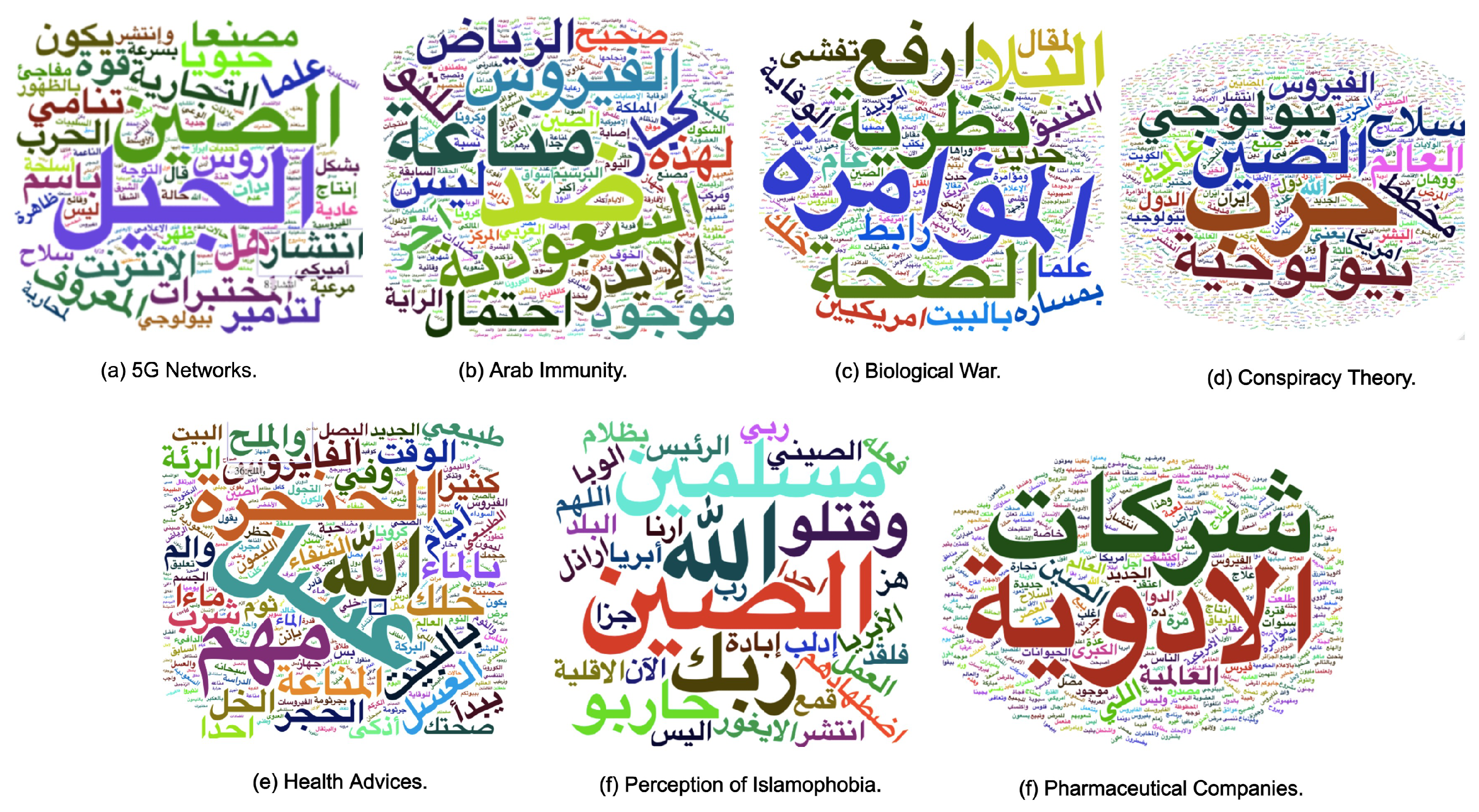
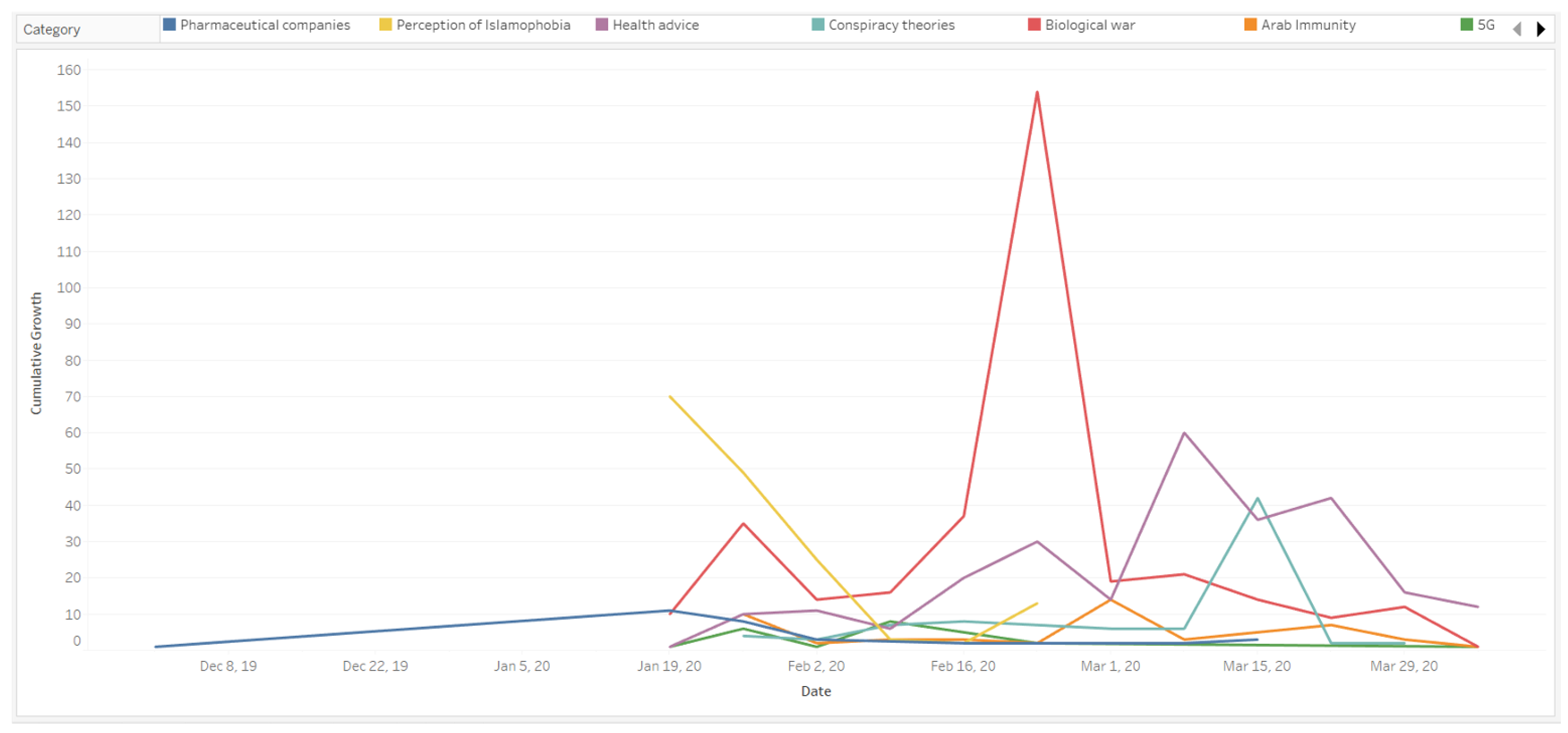
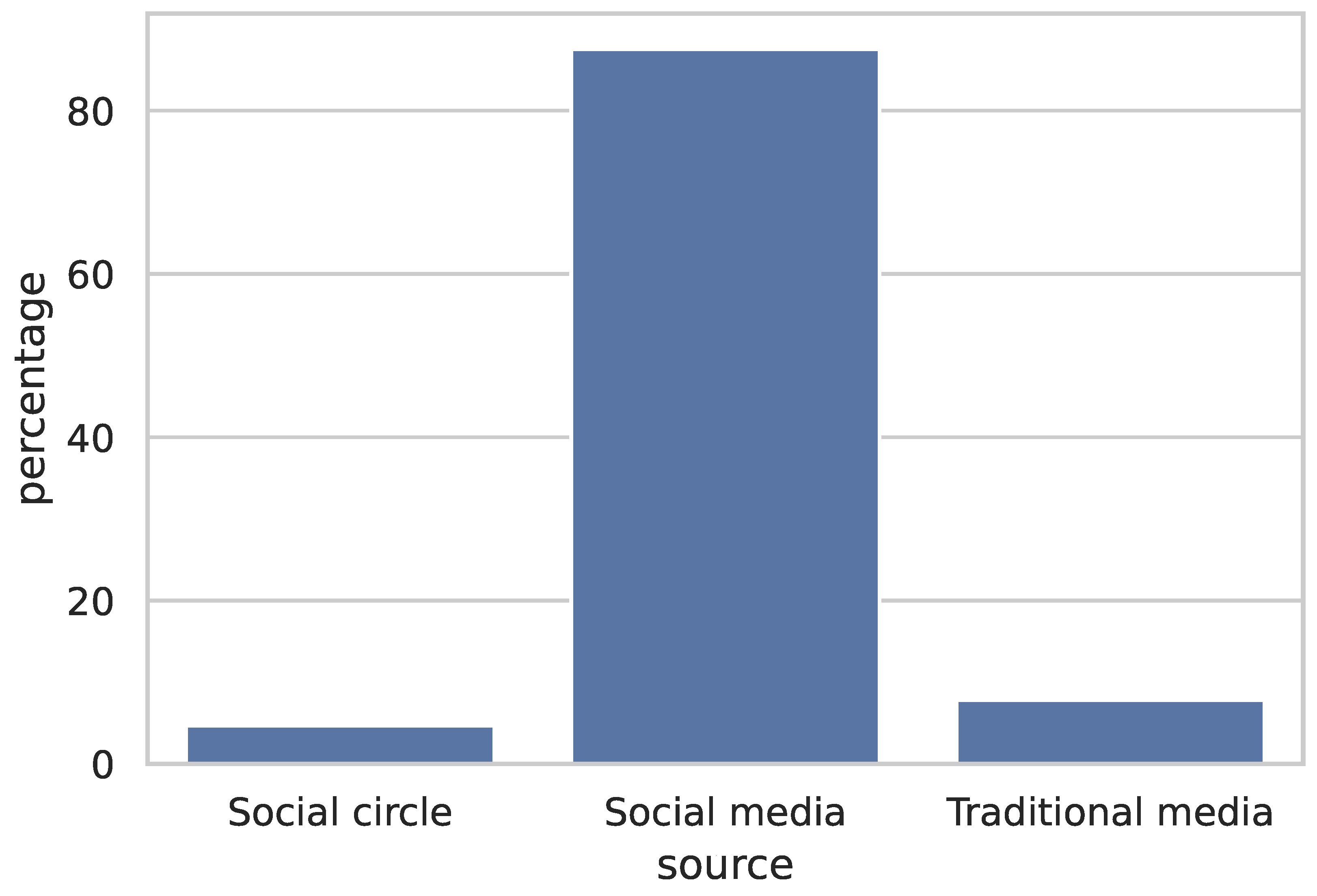
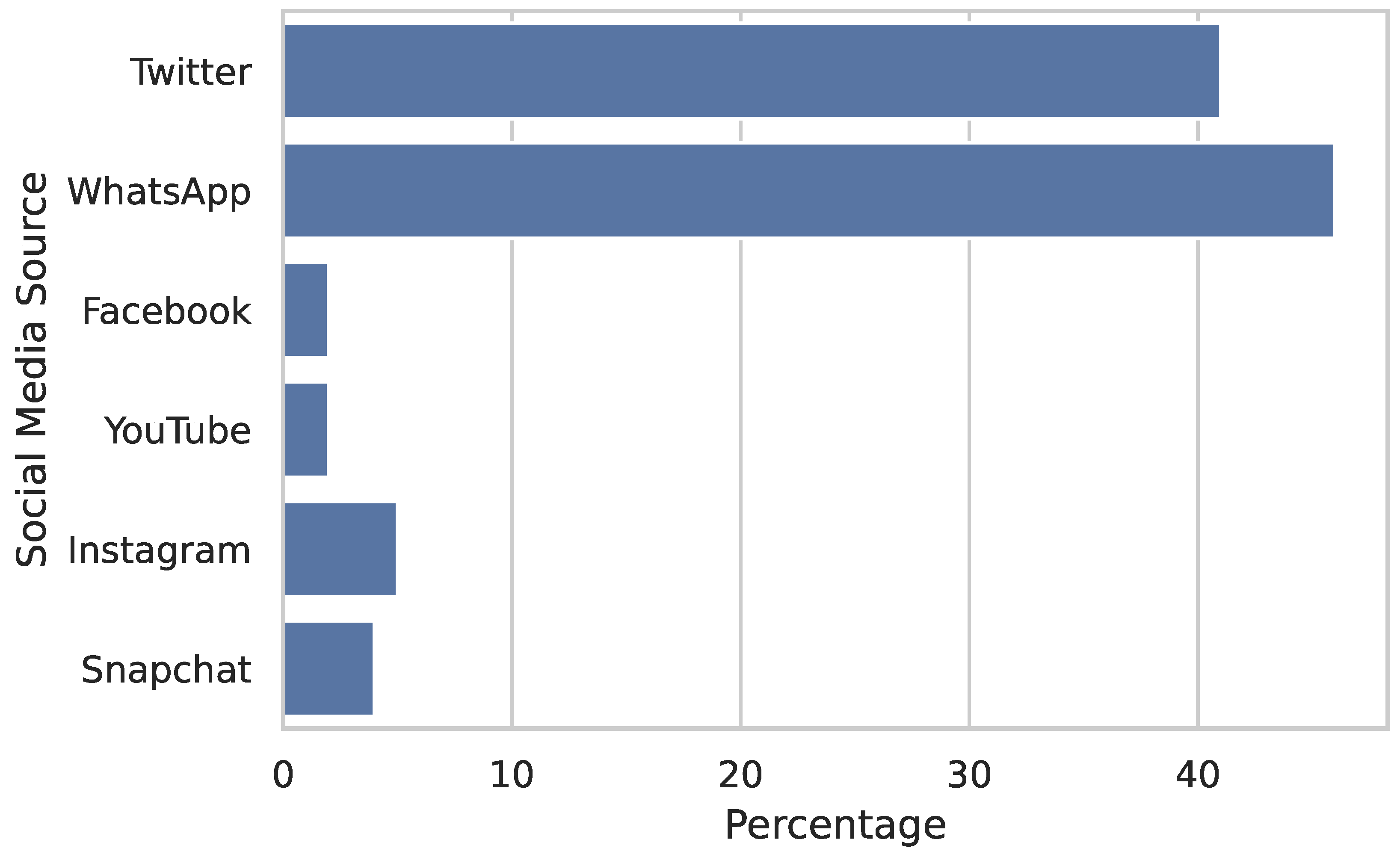
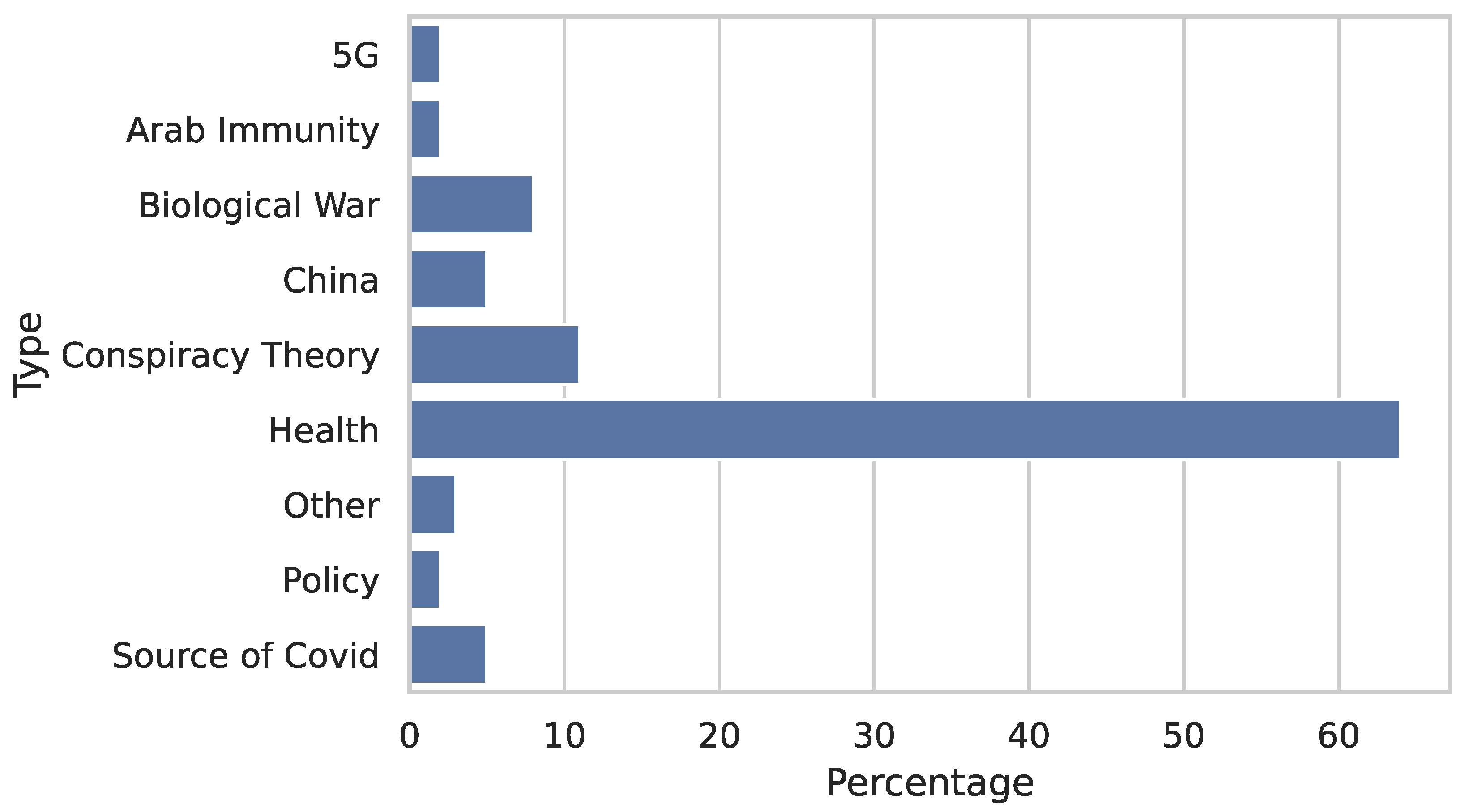
| Dataset | Timeframe | Tweets |
|---|---|---|
| ArCov-19 [21] | January–June 2020 | 785,000 |
| ArCorona [22] | 21 February–31 March 2020 | 1,000,000 |
| Addawood’s Dataset [23] | January–April 2020 | 3,800,000 |
| Alam [24] | January–April 2020 | 218 |
| Alsudais Dataset [9] | December 2019–April 2020 | 1,048,575 |
| Theme | Keywords |
|---|---|
| Pharmaceutical Companies | شركات الادوية |
| Health Advice | الثوم، بخار الماء، إستنشاق، الغرغرة ، عسل الامريكية الماء والملح ، حبة بركة، ليمون، كركم |
| Conspiracy Theories | مؤامرة، تآمر، أؤمن بنظرية، الصهيونية ، المافيا الامريكية، الماسونية |
| Biological War | سلاح بيولوجي، قنبلة بيولوجية ، وزارة الدفاع الامريكية، هندسة جينية ، مخطط، غرض عسكري حرب بيولوجيه، حرب عالمية |
| Arab Immunity | مناعة ضد كورونا، مناعة العرب، العرب |
| Perception of Islamophobia | ضد الاسلام، القضاء على الإسلام، القضاء على المسلمين، اضطهاد، قمع المسلمين، تصفية المسلمين، الغضب الإلهي |
| 5G Network | الجيل الخامس ، أشعة الجيل الخامس، قاتل صامت |
| Theme | # Tweets | # Annotated Tweets |
|---|---|---|
| Pharmaceutical Companies | 101 | 101 |
| Health Advice | 14,320 | 1010 |
| Conspiracy Theories | 3060 | 255 |
| Biological War | 4467 | 898 |
| Arab Immunity | 163 | 163 |
| Perception of Islamophobia | 482 | 198 |
| 5G Network | 92 | 92 |
Publisher’s Note: MDPI stays neutral with regard to jurisdictional claims in published maps and institutional affiliations. |
© 2021 by the authors. Licensee MDPI, Basel, Switzerland. This article is an open access article distributed under the terms and conditions of the Creative Commons Attribution (CC BY) license (https://creativecommons.org/licenses/by/4.0/).
Share and Cite
Alasmari, A.; Addawood, A.; Nouh, M.; Rayes, W.; Al-Wabil, A. A Retrospective Analysis of the COVID-19 Infodemic in Saudi Arabia. Future Internet 2021, 13, 254. https://doi.org/10.3390/fi13100254
Alasmari A, Addawood A, Nouh M, Rayes W, Al-Wabil A. A Retrospective Analysis of the COVID-19 Infodemic in Saudi Arabia. Future Internet. 2021; 13(10):254. https://doi.org/10.3390/fi13100254
Chicago/Turabian StyleAlasmari, Ashwag, Aseel Addawood, Mariam Nouh, Wajanat Rayes, and Areej Al-Wabil. 2021. "A Retrospective Analysis of the COVID-19 Infodemic in Saudi Arabia" Future Internet 13, no. 10: 254. https://doi.org/10.3390/fi13100254






